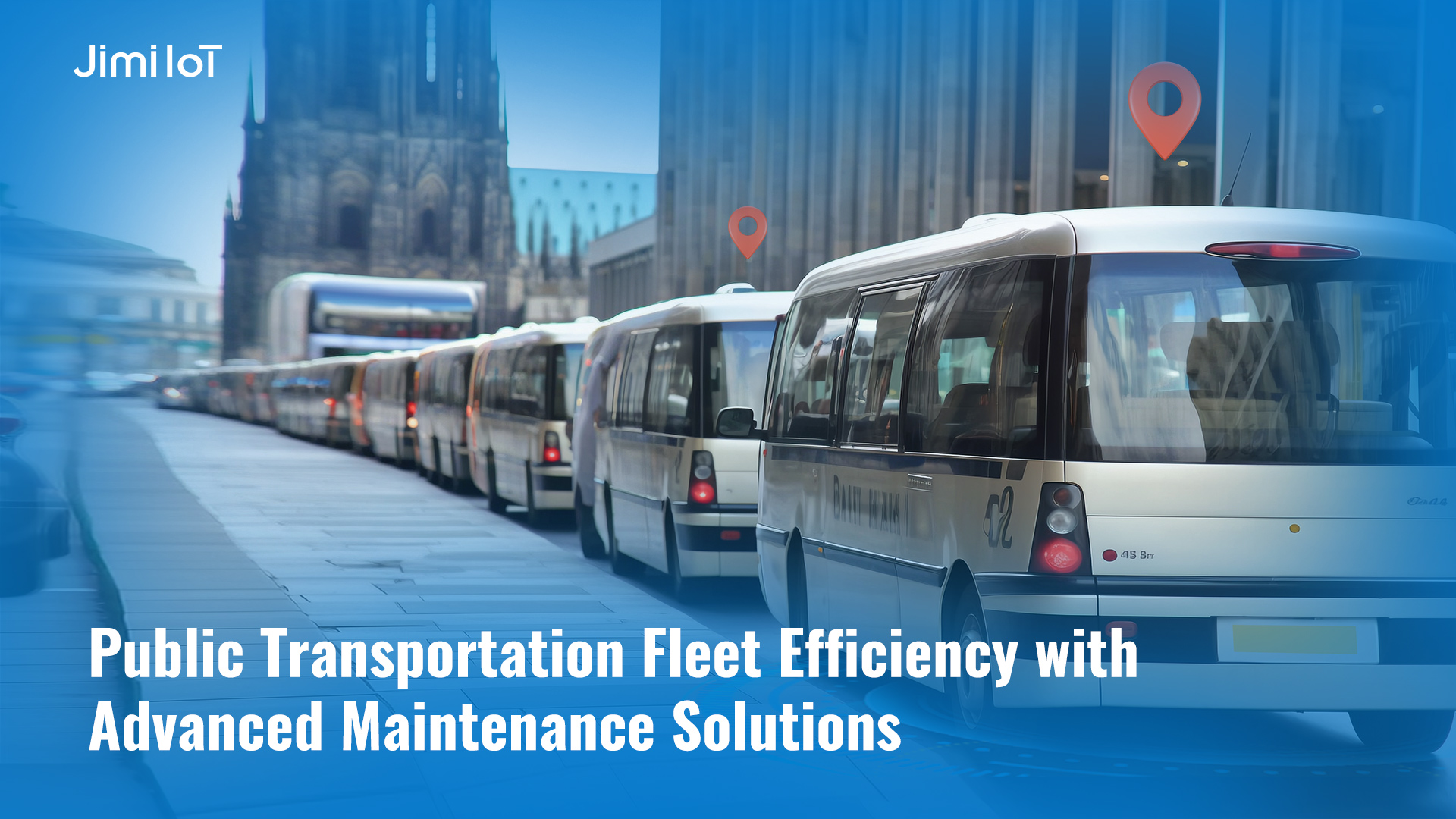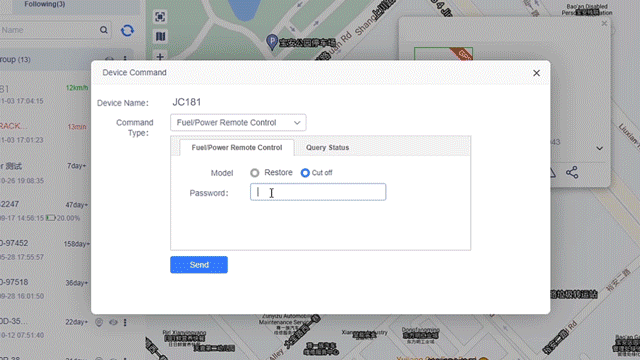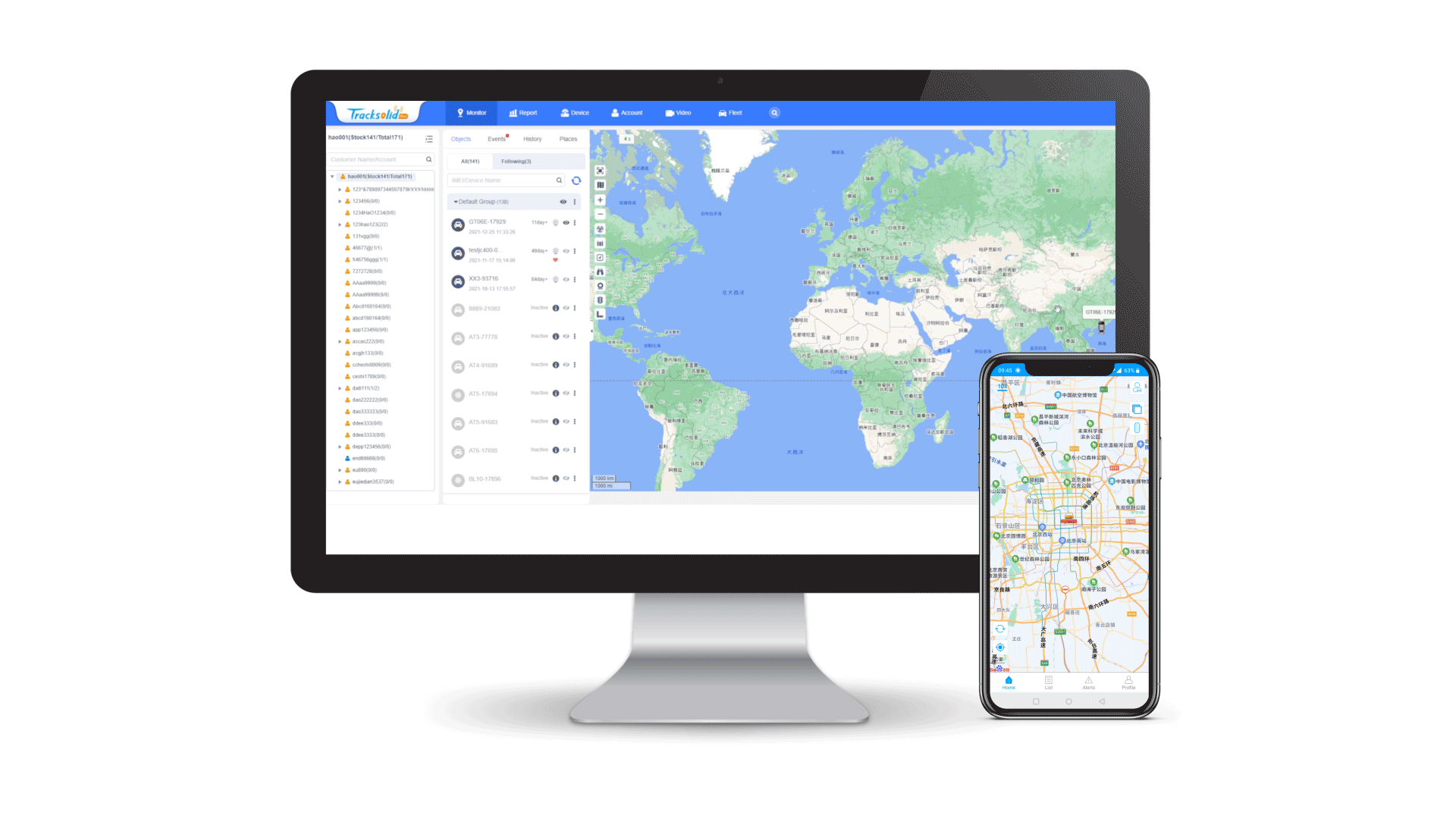Introduction
Public transportation is the backbone of urban mobility, with millions of passengers relying on buses, trains, and other transit options for daily commuting. To ensure these systems run smoothly and efficiently, the fleets involved must be maintained in peak condition. Advanced maintenance solutions offer a wide range of benefits, significantly improving fleet reliability, safety, and cost-efficiency.

1. Real-Time Tracking for Enhanced Operational Efficiency
Real-time tracking has revolutionized fleet management by providing fleet operators with precise, up-to-the-minute data on vehicle locations and statuses. Advanced telematics systems leverage GPS and LTE communication, ensuring that fleet managers can oversee operations effectively, even in challenging environments.
- Two-Way Communication for Driver Management: Real-time tracking combined with two-way communication allows managers to instantly relay instructions or updates to drivers. This enhances fleet coordination, helps address issues as they arise, and boosts driver accountability.
- Reliable Connectivity: With LTE communication supported by GSM (2G) fallback, real-time tracking systems maintain a stable connection across various network conditions. This ensures continuous monitoring of the fleet, even in areas with weaker signal coverage, allowing for uninterrupted data flow.
- Event-Triggered Alerts for Immediate Action: Advanced tracking systems are equipped with event-triggered alerts that notify managers of critical situations, such as excessive idling, speeding, or unauthorized vehicle use. These alerts enable swift responses, reducing downtime and preventing potential operational issues.
- Optimized Resource Allocation: Real-time data on vehicle location and status helps fleet managers make informed decisions about resource allocation. By knowing where each vehicle is and what it’s doing, managers can assign tasks more efficiently, ensuring that no vehicle is underutilized or overworked.
By utilizing real-time tracking and reliable communication, fleet managers can ensure more streamlined operations, improving efficiency, safety, and overall fleet performance.
2. Predictive Maintenance: Reducing Downtime and Enhancing Efficiency
One of the most transformative aspects of modern fleet management is the ability to leverage predictive maintenance systems. These systems continuously monitor key vehicle parameters, providing timely alerts when maintenance is required before issues escalate into costly breakdowns.
- Reduced downtime: Predictive maintenance ensures that minor issues are addressed before they lead to major mechanical failures, keeping vehicles in service and avoiding unexpected disruptions.
- Extended vehicle lifespan: Regular, proactive maintenance helps extend the operational life of vehicles, reducing the frequency of replacements and lowering long-term costs.
- Cost savings: Preventive maintenance is more cost-effective than emergency repairs. By addressing potential problems early, fleet operators can avoid expensive parts replacements and significant repair costs.
- Safety assurance: Vehicles maintained in optimal condition are less likely to experience mechanical failures, reducing the risk of accidents and ensuring the safety of both passengers and drivers. This, in turn, lowers liability risks and insurance premiums.
3. Enhanced Safety for Drivers and Passengers
Ensuring the safety of both drivers and passengers in public transportation requires a combination of real-time monitoring, proactive driver assistance, and incident management. Advanced fleet management systems offer several features to safeguard everyone on board.
- Comprehensive Video Monitoring: Multi-channel video systems provide continuous monitoring of the vehicle’s surroundings, interior, and the driver’s actions. This level of visibility helps detect unsafe driving behaviors, cabin disturbances, or external threats, allowing for timely interventions and improving overall safety.
- Driver Fatigue and Distraction Alerts: Monitoring systems equipped with driver-facing cameras track eye movements and facial expressions to detect signs of fatigue or distraction. When such behaviors are identified, audible in-cabin alerts prompt drivers to correct their actions, reducing the risk of accidents caused by drowsy or inattentive driving.
- Proactive Driver Assistance: Advanced Driver Assistance Systems (ADAS) further enhance safety by providing real-time alerts for hazards such as lane departures or potential collisions. These alerts help drivers make immediate corrections, preventing incidents before they escalate.
- Critical Event Recording: In case of an accident or emergency, critical video footage is automatically uploaded to secure cloud storage. This ensures that key evidence is preserved, even if the on-device recording is overwritten, providing essential data for investigations and dispute resolution.
By combining real-time driver monitoring, proactive alerts, and secure incident recording, these advanced safety features play a vital role in preventing accidents and protecting both drivers and passengers.
4. Ensuring Compliance with Regulatory Standards
Public transportation fleets must comply with a wide array of regulations related to vehicle safety, emissions, and performance. Meeting these regulatory requirements can be a challenge, but advanced maintenance systems simplify the process.
- Automated compliance: These systems can automate scheduling for mandatory inspections, maintain detailed digital logs of maintenance activities, and generate reports for regulatory bodies. This reduces the administrative burden on fleet operators and ensures that fleets remain in full compliance with industry standards.
- Streamlined reporting: With access to detailed vehicle data, fleet managers can easily produce reports on fleet performance, emissions compliance, and maintenance history, simplifying interactions with regulators and reducing the risk of non-compliance fines.
5. Boosting Operational Efficiency and Productivity
Advanced maintenance solutions significantly improve the overall efficiency of fleet operations by prioritizing maintenance tasks based on real-time data.
- Efficient resource allocation: Maintenance teams can focus on critical issues as they arise, rather than relying on time-based maintenance schedules. For example, if a vehicle shows signs of low brake fluid or an emerging engine problem, repairs can be prioritized before the issue escalates. This ensures maximum vehicle availability and reduces the likelihood of service disruptions.
- Improved fleet productivity: By reducing vehicle downtime and addressing maintenance needs promptly, fleet managers can maintain high levels of operational efficiency, ensuring that public transportation services run smoothly and on time.
6. Reducing Environmental Impact
Environmental sustainability is a growing concern for public transportation operators. Advanced maintenance solutions help fleets reduce their environmental impact by improving fuel efficiency and lowering emissions.
- Fuel efficiency: Well-maintained vehicles operate more efficiently, consuming less fuel and producing fewer emissions. Even small improvements in fuel economy can lead to significant reductions in greenhouse gas emissions, particularly for large fleets.
- Monitoring driving behavior: Some advanced telematics systems also track driver behavior, such as excessive idling or harsh acceleration, which can negatively impact fuel efficiency. By addressing these issues, fleet managers can further optimize fuel usage and reduce environmental harm.
7. Data-Driven Decision Making for Continuous Improvement
The integration of data-driven insights from modern fleet management platforms empowers fleet operators to continuously enhance operational performance and improve decision-making.
- Comprehensive Performance Analysis: Through detailed reports on vehicle activity, driving behavior, and maintenance status, managers can detect patterns and recurring issues within their fleets. This data allows them to anticipate mechanical problems, schedule preventive maintenance, and optimize vehicle performance, minimizing unexpected downtimes and repair costs.
- Fleet Optimization Through Data: Fleet managers can use real-time data to improve asset allocation, optimize vehicle replacement schedules, and ensure proper vehicle utilization. Insights on fuel consumption, routes taken, and driver performance enable fleet operators to make informed decisions that improve overall efficiency and reduce operational costs.
- Predictive Maintenance: Leveraging historical data, fleet managers can predict potential equipment failures or parts that need replacement. By staying proactive with maintenance scheduling, they ensure that fleet vehicles remain in optimal condition, reducing breakdown risks and prolonging vehicle lifespan.
- Actionable Alerts and Insights: Real-time alerts on fuel theft, unauthorized usage, or route deviations help managers address issues immediately, ensuring fleet security and operational transparency. Data-driven decisions foster continuous improvement by turning insights into concrete actions that benefit overall fleet performance.
By harnessing the power of data analytics, fleet managers can achieve greater efficiency, reduce costs, and enhance the reliability of their fleets, driving long-term improvements across all operations.
Conclusion
Advanced maintenance solutions are essential tools for maximizing the efficiency, safety, and sustainability of public transportation fleets. By leveraging real-time tracking, predictive maintenance, and data-driven insights, fleet operators can reduce operational costs, enhance safety, ensure regulatory compliance, and minimize their environmental footprint.
For public transportation authorities, investing in these technologies is a forward-thinking strategy that ensures reliable, efficient services for passengers while maintaining long-term fleet performance and sustainability.
Why JimiIoT
JimiIoT is a global leader in innovative IoT solutions. We provide cutting-edge hardware and software tailored to enhance efficiency and connectivity. Our range of products includes advanced GPS tracking devices, asset management solutions, smart vehicle dashcams, and telematics platforms. With a focus on technological excellence and customer satisfaction, we empower businesses to optimize operations and gain valuable insights from data-driven analytics. Trust JimiIoT to drive positive change and unlock growth opportunities in the digital age.
If you would like more details, please visit Facebook, LinkedIn, INS, and Twitter pages for further information.
 US
US ES
ES PT
PT TH
TH VN
VN JP
JP






